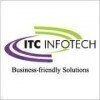

CSC Global



20+ CSC Global Interview Questions and Answers
Q1. What is Option trade and How it would reflect in your Cash and Position recon
Option trade is a contract between two parties giving the buyer the right, but not the obligation, to buy or sell an underlying asset at a specified price on or before a specified date.
Option trade is a type of derivative contract
It involves buying or selling the right to buy or sell an underlying asset at a predetermined price
The buyer of an option pays a premium to the seller for the right to exercise the option
Option trades can be used for hedging or speculation
In cash and...read more

Q2. What is Call buyer and Call seller Expectations and Losses
Call buyers expect the price of the underlying asset to rise, while call sellers expect it to fall.
Call buyers have the right to buy the underlying asset at a predetermined price, so they expect the price to rise above that level.
Call sellers have the obligation to sell the underlying asset at a predetermined price, so they expect the price to stay below that level.
Call buyers' losses are limited to the premium they paid for the option, while call sellers' losses are potentia...read more

Q3. What do you mean by corporate actions ?
Corporate actions refer to events initiated by a public company that can affect its shareholders and securities.
Corporate actions include dividends, stock splits, mergers, acquisitions, rights issues, and spin-offs.
These actions can impact the value of securities, alter ownership structure, or change the financial structure of the company.
Investors need to stay informed about corporate actions to make informed decisions about their investments.

Q4. What is Net asset value ?
Net asset value (NAV) is the value of a fund's assets minus its liabilities, divided by the number of shares outstanding.
NAV is calculated by subtracting the fund's liabilities from its assets.
The result is then divided by the number of shares outstanding to determine the NAV per share.
NAV is used to determine the price at which shares of a mutual fund are bought or sold.
It is an important metric for investors to assess the value of their investments.

Q5. Equalization concept and overall structure of private equity how it is been processed
Equalization concept and overall structure of private equity
Equalization concept refers to the process of adjusting the returns of limited partners in a private equity fund to ensure that they receive a fair share of the profits
Private equity involves investing in private companies with the aim of generating high returns
The overall structure of private equity involves raising capital from investors, acquiring companies, improving their operations, and eventually selling them ...read more

Q6. What is different types of loan?
Different types of loans include personal loans, home loans, auto loans, student loans, and business loans.
Personal loans are unsecured loans that individuals can use for various purposes.
Home loans are used to purchase a home or real estate property.
Auto loans are specifically for purchasing a vehicle.
Student loans are used to finance education expenses.
Business loans are for funding business operations or expansion.

Q7. What do you mean by Waterfall Distribution?
Waterfall distribution is a method of distributing funds or assets to investors in a predetermined sequence.
Waterfall distribution is commonly used in private equity and real estate investments.
It involves distributing profits or proceeds to different classes of investors in a specific order.
The distribution waterfall typically includes hurdles or thresholds that must be met before certain investors receive their share.
Examples of waterfall distribution include 'cash flow wat...read more

Q8. What are your views regarding Indian economy?
Indian economy is a developing economy with a huge potential for growth.
India is the world's sixth-largest economy by nominal GDP and third-largest by purchasing power parity.
The economy is driven by the service sector, followed by agriculture and manufacturing.
India has a young and growing population, which can be a huge asset for the economy.
The government has taken several initiatives like Make in India, Digital India, and Skill India to boost the economy.
However, there ar...read more


Q9. what is management fees
Management fees are charges paid by investors to a professional investment manager for managing their assets.
Management fees are a percentage of the total assets under management (AUM) and are typically charged annually.
These fees cover the costs of research, analysis, and decision-making involved in managing the investments.
For example, a mutual fund may charge a management fee of 1% per year, which means investors pay $10 for every $1,000 invested.
Management fees can vary d...read more

Q10. What is prepayment and accruals
Prepayment and accruals are accounting concepts used to recognize revenue and expenses in the appropriate accounting period.
Prepayment refers to when a company pays for goods or services before they are received. This is recorded as an asset on the balance sheet until the goods or services are received.
Accruals refer to when a company recognizes revenue or expenses before cash is exchanged. This is done to match revenue and expenses to the period in which they are incurred, r...read more

Q11. What is your email id
I cannot disclose my personal email id for privacy reasons.
I prefer to communicate through official channels provided by the company.
Sharing personal email id can lead to security risks.
I can provide an alternate email id for official communication.

Q12. What is management fees, performance fees, corporate action.
Management fees are charges paid by investors to the fund manager for managing their investments. Performance fees are additional fees paid based on the fund's performance. Corporate actions are events initiated by a company that impact its shareholders.
Management fees are fees charged by fund managers for managing investments
Performance fees are additional fees paid based on the fund's performance
Corporate actions are events initiated by a company that impact its shareholder...read more

Q13. Different types of distributions
Different types of distributions refer to the various ways data can be spread out in a dataset.
Normal distribution: bell-shaped curve with mean and standard deviation
Uniform distribution: all outcomes are equally likely
Binomial distribution: discrete distribution with fixed number of trials and probability of success
Poisson distribution: used for count data with rare events
Exponential distribution: used for continuous data with constant rate of decay

Q14. What is the PE Fund life cycle?
PE Fund life cycle involves fundraising, investment, monitoring, and exit strategies.
Fundraising: PE firms raise capital from investors to form a fund.
Investment: Funds are used to acquire equity stakes in companies.
Monitoring: PE firms actively manage and monitor their investments.
Exit strategies: PE firms aim to exit investments through IPOs, mergers, or acquisitions.

Q15. Tell the entry for prepayment
Prepayment entry is made to record advance payment for goods or services not yet received.
Prepayment entry involves debiting Prepaid Expenses account and crediting Cash or Accounts Payable account.
It represents a liability until the goods or services are received.
Example: A company pays rent for the next three months in advance, the entry would be to debit Prepaid Rent and credit Cash.

Q16. How to calculate ending prepaid expenses.
Ending prepaid expenses can be calculated by subtracting the prepaid expenses at the beginning of the period from the total prepaid expenses incurred during the period.
Determine the prepaid expenses at the beginning of the period
Determine the total prepaid expenses incurred during the period
Subtract the prepaid expenses at the beginning of the period from the total prepaid expenses incurred during the period
The resulting amount is the ending prepaid expenses

Q17. Name few Acronyms related to this field based on your experience and explain the same ?
Some acronyms related to Compliance Executive field are AML, KYC, FCPA, GDPR, and SOX.
AML - Anti-Money Laundering
KYC - Know Your Customer
FCPA - Foreign Corrupt Practices Act
GDPR - General Data Protection Regulation
SOX - Sarbanes-Oxley Act

Q18. different types of capital
Different types of capital include financial capital, human capital, social capital, and cultural capital.
Financial capital refers to money and assets that can be used for investment or production.
Human capital is the skills, knowledge, and experience possessed by individuals.
Social capital is the network of relationships and connections that individuals have.
Cultural capital includes the values, beliefs, and practices of a particular culture.
Examples: Financial capital - sav...read more

Q19. What is your experience in Regulatory compliance?
I have over 10 years of experience in regulatory compliance, including developing policies, conducting audits, and ensuring adherence to laws and regulations.
Developed and implemented compliance policies and procedures
Conducted regular audits to ensure adherence to regulations
Provided training to staff on compliance requirements
Worked closely with regulatory agencies to address any issues or concerns
Stayed up-to-date on changes in laws and regulations affecting the industry

Q20. What is term loan?
A term loan is a type of loan that is repaid in regular installments over a set period of time.
Term loans have a fixed repayment schedule, typically ranging from one to ten years.
Interest rates on term loans can be fixed or variable.
Term loans are commonly used for financing major purchases or investments, such as buying equipment or expanding a business.
The borrower receives the full loan amount upfront and repays it over the term of the loan.

Q21. What is closing
Closing refers to the final stage of a sales process where a deal is completed and the customer commits to making a purchase.
Closing involves asking for the sale and overcoming any objections the customer may have.
Common closing techniques include the assumptive close, the summary close, and the urgency close.
Examples of closing questions include 'Would you like to proceed with the purchase today?' or 'Is there anything else I can help you with?'

Q22. What are derivatives
Derivatives are financial contracts that derive their value from an underlying asset or security.
Derivatives can be used for hedging or speculation.
Examples of derivatives include futures, options, and swaps.
Derivatives can be traded on exchanges or over-the-counter.
Derivatives can be complex and involve significant risk.
Derivatives are widely used in finance and investment management.

Q23. Willing to learn and teach
Yes, I am willing to learn new skills and knowledge, and also share my expertise with others.
I am always eager to expand my skill set and knowledge through training and development opportunities.
I am also willing to share my expertise with colleagues and assist them in learning new tasks or processes.
For example, I recently attended a workshop on new software and then trained my team on how to use it effectively.

Q24. Contents of minutes !
Minutes typically include key discussion points, decisions made, action items, and attendees.
Key discussion points are summarized briefly
Decisions made during the meeting are documented
Action items assigned to specific individuals are listed
Attendees present at the meeting are noted
Minutes are usually approved at the beginning of the next meeting

Q25. difference between sql and nosql
SQL is a relational database management system, while NoSQL is a non-relational database management system.
SQL databases are table-based and have a predefined schema, while NoSQL databases are document-based, key-value pairs, graph databases, or wide-column stores.
SQL databases are suitable for complex queries and transactions, while NoSQL databases are better for large amounts of data and scalable applications.
Examples of SQL databases include MySQL, Oracle, and PostgreSQL, ...read more

Q26. explain oops concept
OOPs (Object-Oriented Programming) is a programming paradigm based on the concept of objects, which can contain data and code.
OOPs focuses on creating objects that interact with each other to solve problems.
Key principles of OOPs include encapsulation, inheritance, polymorphism, and abstraction.
Encapsulation involves bundling data and methods that operate on the data into a single unit.
Inheritance allows a class to inherit properties and behavior from another class.
Polymorphi...read more





Top HR Questions asked in CSC Global
Interview Process at CSC Global

Top Interview Questions from Similar Companies









Reviews
Interviews
Salaries
Users/Month












